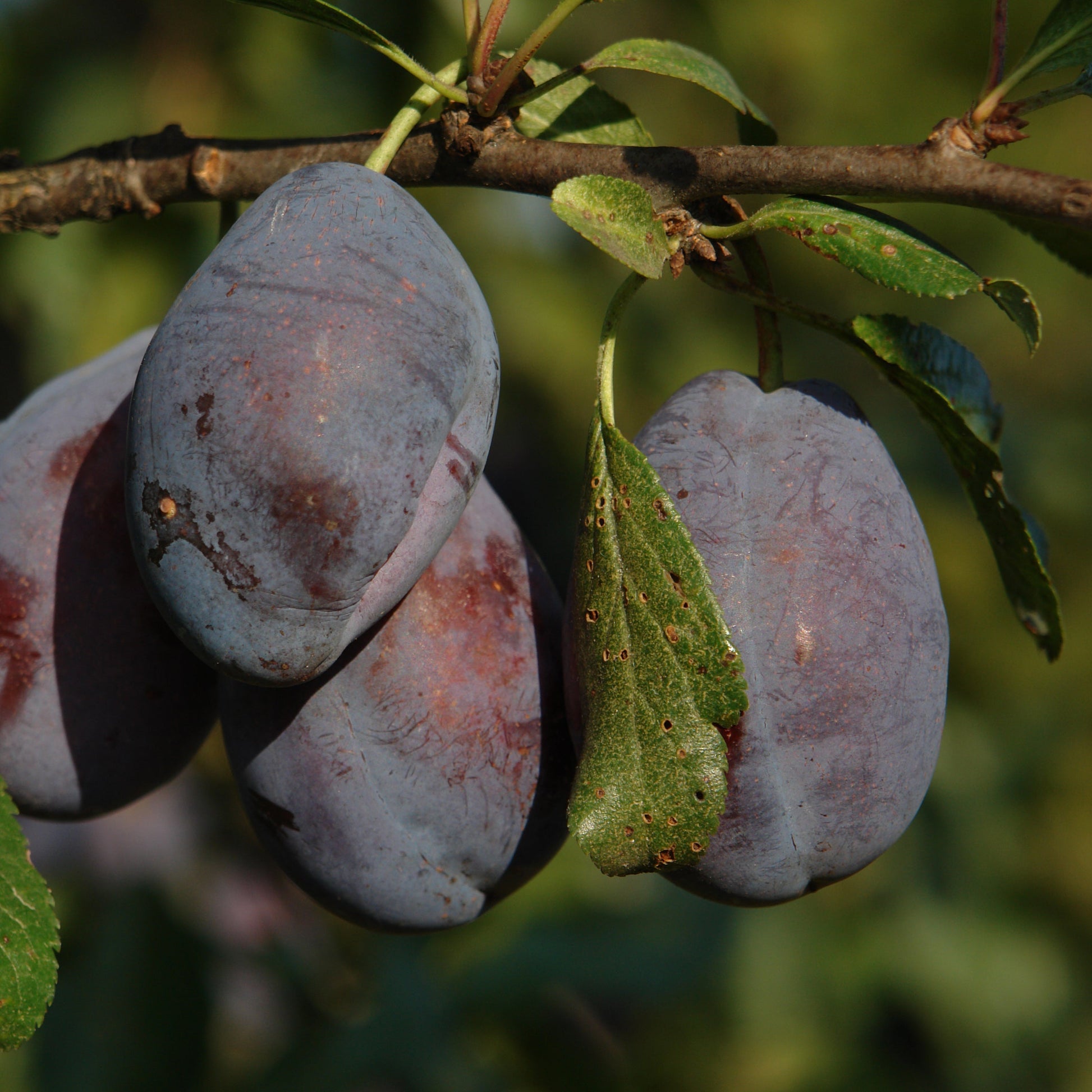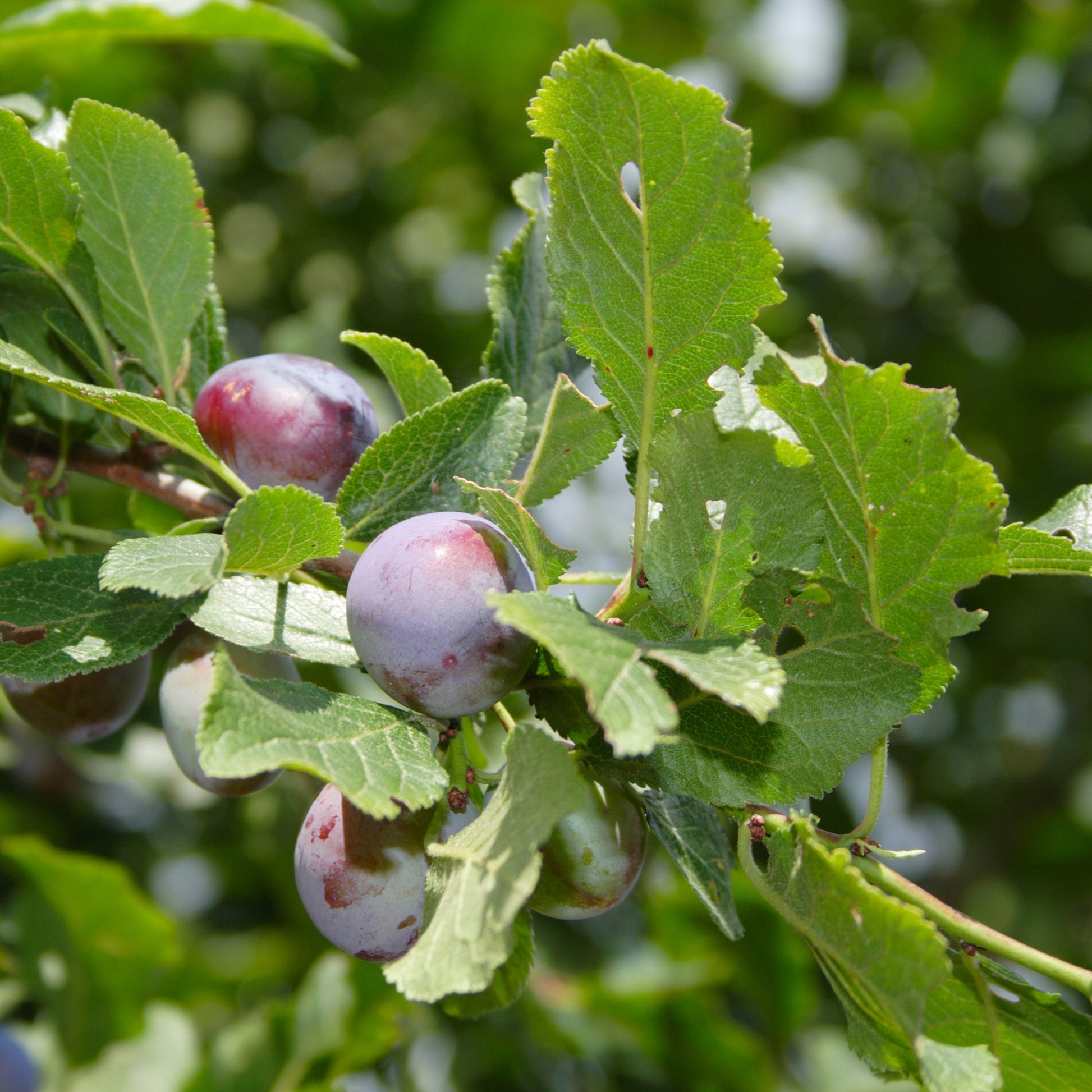Limited Quantities - Reserve Now For Fall
Stanley Plum Tree
Stanley Plum Tree
Couldn't load pickup availability
Prunus domestica ‘Stanley’
Stanley Plum Tree
The Stanley Plum Tree is a self-pollinating European plum variety loved for its sweet, juicy flesh, deep purple skin, and heavy yields. As one of the most popular plums for home gardens and commercial orchards alike, Stanley is prized for its versatility in fresh eating, drying (prunes), canning, and baking.
With reliable production, showy spring flowers, and a tidy upright form, the Stanley Plum Tree is an ideal fit for edible landscapes, backyard orchards, and multi-purpose garden beds.
Stanley Plum Tree Overview
| Attribute | Details |
|---|---|
| 🌿 Botanical Name | Prunus domestica ‘Stanley’ |
| 🏷️ Common Names | Stanley Plum, European Plum |
| 🌳 Mature Height | 12–15 feet (semi-dwarf); up to 18 feet (standard) |
| 🌐 Mature Width | 10–12 feet |
| 📈 Growth Rate | Moderate (1–2 feet per year) |
| ⏳ Lifespan | 20–30 years |
| 🧊 USDA Zones | 5–8 |
| ☀️ Sun Preference | Full sun (essential for maximum fruit yield and sweetness) |
| 🧱 Soil Type | Well-drained loam or sandy soil |
| ⚖️ Soil pH | Slightly acidic to neutral (6.0–7.0) |
| 💧 Water Needs | Moderate; prefers consistent watering during fruiting |
| 🍑 Fruit Type | Medium-sized, oval, purple skin with yellow-green flesh |
| 🌸 Flower Color | White; blooms in early to mid-spring |
| 🐝 Pollination | Self-pollinating; benefits from nearby plums for higher yield |
| 🌿 Growth Habit | Upright, spreading branches with dense foliage |
| ↔️ Spacing | 12–15 ft (semi-dwarf); 15–18 ft (standard) |
| 🏡 Landscape Uses | Edible gardens, backyard orchards, multi-use borders |
| 🧹 Maintenance Level | Moderate |
Environmental Benefits
🌸 Attracts early-season pollinators and beneficial insects
🍑 Encourages home food production and edible landscape design
🌿 Adds seasonal beauty with spring blooms and fruit color
🪶 Produces fall fruit for wildlife and natural foragers
Pros & Cons
| ✅ Pros | ⚠️ Cons |
|---|---|
| 🍑 Delicious for eating fresh, drying, and cooking | 🐛 Susceptible to plum pests and brown rot if unmanaged |
| 🌿 Self-pollinating with reliable annual yields | 💧 Requires consistent watering, especially in dry spells |
| 🌸 Spring blooms add ornamental appeal | ✂️ Needs pruning to maintain airflow and structure |
| 🧺 Great for small orchards and backyard growers | ❄️ Early spring frosts can impact flower set in colder zones |
| 🌞 Performs well in full sun with minimal care | 📦 Fruit can split with overwatering during ripening |
Planting & Care Guide
🛁 Water thoroughly before and after planting; maintain consistent moisture
🕳️ Dig a hole twice the width of the root zone; plant with graft union 2 inches above soil
🌾 Apply mulch 2–3 inches deep around base, avoiding trunk contact
💦 Water weekly during the growing season, especially while fruit is forming
✂️ Prune in late winter to shape tree and improve fruiting wood
🧪 Fertilize in early spring with a fruit tree blend or balanced organic fertilizer
The Stanley Plum Tree is a classic and productive fruiting tree that brings abundant harvests, ornamental beauty, and culinary versatility to any landscape. Whether you're crafting homemade prunes, baking plum tarts, or picking sun-warmed fruit straight from the branch, Stanley offers flavor, reliability, and all-season satisfaction.
Share




